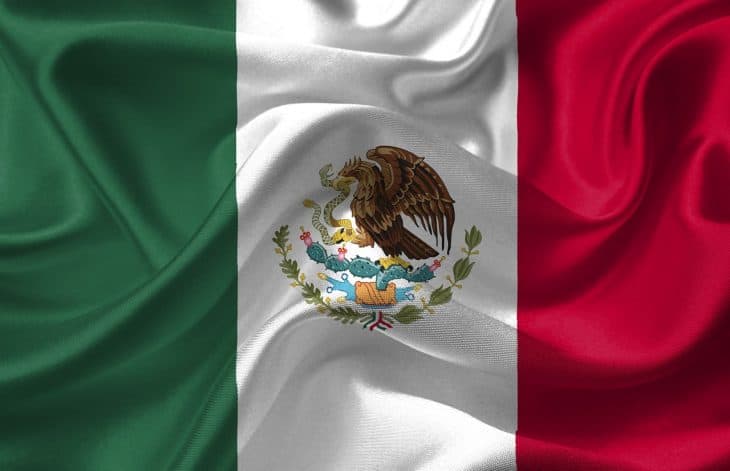
People usually think of sombreros, tequila, tacos, and other stereotypes when they hear the word Mexico. However, many people seem to overlook the millennia of heritage found in Mexico. Many of humanity’s earliest civilizations called Mexico home, and only luck allowed the Spaniards to quickly conquer its early people. Even then, Mexico never completely abandoned its past, with much of its culture owing to its ancient legacy. Learn more about the wonders of this place with these Mexico facts.
- Mexico covers an estimated area of 1.72 million km².
- Water makes up 2.5% of Mexico’s total area.
- An estimated 129 million people live in Mexico today.
- On average, 61 Mexicans live for every square kilometer of Mexican soil.
- With 82.7% of the population as followers, Roman Catholicism dominates the Mexican religion.
- The human presence in Mexico goes back to 10,000 years ago.
- The Olmecs ruled over the Gulf Coast of Mexico around 1500 BC.
- Toltec influences dominated Mexican peoples from the 11th to the early-16th centuries AD.
- The Aztec Empire ruled Central Mexico when the Spaniards arrived at the end of the 15th Century.
- Spain also founded the Viceroyalty of New Spain in 1535 to govern their new colony.
- After 20 years of war, Mexico regained its independence from Spain in 1821.
- The USA defeated Mexico in the Mexican-American War of 1846 to 1848.
- A French-supported monarchy ruled Mexico from 1865 to 1867.
- A revolutionary war gripped Mexico from 1910 to 1920.
- The modern Mexican government controlled the country from 1920 onward.
- Mexico officially calls itself the United Mexican States (UMS).
- Mexico actually has no official language.
- Mexicans speak Spanish along with 56 other Amerindian languages across the country.
- Mexico ranks 140th on the Global Peace Index.
- The war between the government and drug cartels has killed 120,000 people since 2006.
Mexico Facts Infographics
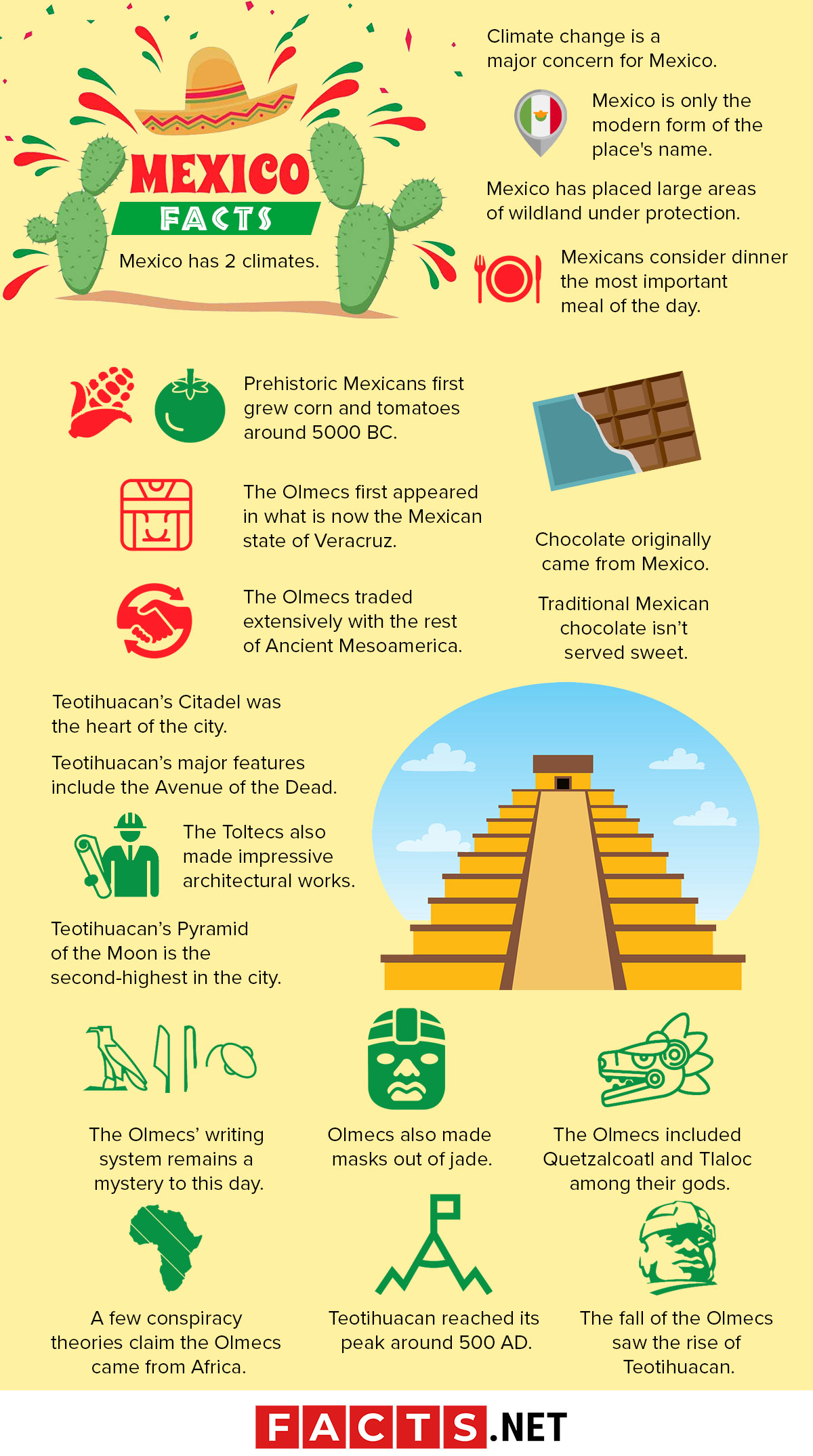
Mexico is only the modern form of the place's name.
This comes from the Nahuatl name Mēxihco, which the Aztecs used to refer to the heart of their empire. This domain included the Valley of Mexico, along with its immediate surroundings. The Spaniards continued to use the name to refer to the region around the capital of Mexico City. After independence, the name applied to both the state around the capital city, as well as the nation as a whole.
Mexico has 2 climates.
In the north, Mexico enjoys a temperate climate. In the south, Mexico enjoys a tropical climate. Northern Mexico generally averages temperatures between 16 to 18°C outside of the Sonoran Desert. There, temperatures can reach up to 50°C in the daytime.
Meanwhile, Southern Mexico averages higher temperatures between 20 to 24°C. Generally, Southern Mexico is also wetter, with over 2000 mm of rain throughout the year. On the flip side, Northern Mexico’s only experiences 1000 mm of rain annually.
Climate change is a major concern for Mexico.
In particular, rising temperatures and reduced rainfall especially concern the Mexican government. From 1995 to 2010, climate change has caused crop yields to drop between 50 to 60% in some areas. More recently, studies predict a 12% drop in wheat production from 2019 onward, again because of climate change.
Given the importance of the agricultural sector to the economy, it’s only natural for the Mexican government to be alarmed. Beyond Mexico, climate change also threatens the country’s biodiversity, especially in the rainforests of the south. Something to really keep in mind, from Mexico facts.
Mexico ranks fourth in terms of biodiversity among the countries of the world.
Another example of Mexico Facts to keep in mind, no matter how we look at it. Over 200,000 different species of plants and animals live in Mexico, accounting for 12% of the Earth’s biodiversity. The Mexican government has since placed 2,500 species under protection, only 1% of those 200,000 species. Examples of those include the jaguar, the Mexican Wolf, and then endangered Axolotl.
Mexico has placed large areas of wildland under protection.
All in all, Mexico has an estimated 170,000 km² of protected land and water. These sanctuaries include 67 national parks, 34 biosphere reserves, 26 areas with protected plant and animal life, and 4 each of natural monuments and resources.
Prehistoric Mexicans first grew corn and tomatoes around 5000 BC.
According to archaeologists, the first corn measured considerably smaller, rearing only 1 cob per plant. The cob itself also spanned only 1 inch long. It took centuries of selective breeding for corn to grow multiple, large cobs for every plant.
First grown in Southern Mexico, it had spread across the whole region by 2500 BC. Corn had also reached the Andes region in South America by 4000 BC. From there, it then spread to the lowlands by the start of the AD calendar 2000 years ago. Talk about historic example of Mexico facts.
The Olmecs first appeared in what is now the Mexican state of Veracruz.
The region enjoyed plentiful water in the form of the Coatzacoalcos River. The river’s annual floods also deposited sediments on the surrounding land, making them fertile and suitable for farming. Archaeologists have even compared the Olmecs’ homeland to the Valley of the Nile in Egypt, as well as Mesopotamia in what is now Iraq.
The Olmecs traded extensively with the rest of Ancient Mesoamerica.
In particular, they had a huge demand for raw materials like jade and obsidian. They imported both from the proto-Mayans of what is now Guatemala. Today, archaeologists still aren’t sure whether the Olmecs had a currency of their own, or used a form of barter in trading with other cultures.
The Olmecs pioneered religious practices adopted by all Mesoamerican cultures afterward.
Among the Olmec’s religious practices were ceremonial bloodletting, although it’s not necessarily human sacrifices. To perfom this ritual, the Olmecs used various tools like obsidian blades or shark teeth and stingray spines to pierce their tongues.
They also pierced earlobes and even the penis to get blood, which they caught using amate paper. To complete the ritual, they would burn the blood and paper as offerings to their gods. Definitely a cringe-worthy and painful example of Mexico facts, but important nonetheless.
Another Olmec religious ritual inherited by their successors was the Mesoamerican ballgame.
This early Mesoamerican ballgame actually served as a predecessor of modern basketball. Played in stone courts, the game also used a ball made from solid rubber. The game’s traditional hoop was also made in stone, but lacked a net, and attached vertically instead of horizontally to a wall.
In contrast with modern basketball, players couldn’t touch the ball with their hands – instead bouncing it between them using their hips and limbs. The weight of the ball caused extensive bruises, with tournaments held as part of religious festivals. Winners then received as a prize the honor of becoming sacrifices to the gods.

The Olmecs declined and then collapsed between the 4th and 3rd Centuries BC.
Archaeologists still don’t know the exact cause for this civilization’s decline, with many theories under study today. One theory is that Olmecs exhausted the land with excessive farming, making it lose the ability to grow crops.
Meanwhile, the most common theory for the Olmecs’ fall is a series of volcanic eruptions that caused major changes in the local climate. This, in turn, forced the Olmecs to scatter across the region, leaving them vulnerable to assimilation by younger cultures.
The Olmecs left behind huge stone statues carved in the shape of heads.
So far, archaeologists have found 17 of these head-shaped sculptures, which can go up to 3 meters in height. Each of them wears a helmet, and bore completely unique facial features. This implies that each sculpture had an individual model.
Today, even after decades of study, archaeologists still don’t know why the Olmecs made such statues. Whether for religious purposes or to honor the individual they modeled each sculpture on, the study continues. Talk about mysterious Mexico facts.
Olmecs also made masks out of jade.
Much like the stone head statues, these masks blend the features of a person with that a jaguar. This indicates the masks’ religious significance, as the Olmec religion viewed jaguars as a sacred animal.
That said, archaeologists still don’t know the exact purpose the masks had, though they do know it became a Mesoamerican tradition. Even after the Olmecs fell, later cultures like the Toltecs and Zapotecs also made jade masks of their own.
The Olmecs’ writing system remains a mystery to this day.
Archaeologists have thus far only found fragmentary clues to the Olmecs’ writing system and language. They know it existed, with the oldest of what little evidence they could find going back to 900 BC. Some evidence also points to older fragments of the Olmecs’ writing system going back to 1100 BC, but many archaeologists contest them due to a lack of context.
The Olmecs included Quetzalcoatl and Tlaloc among their gods.
The Olmec names for them remain unknown, so archaeologists use the Aztec names instead for convenience. The Olmecs depicted Quetzalcoatl as a Feathered Serpent ruling the skies and the wind, who taught man how to grow crops.
They also depicted Tlaloc as the ruler of the clouds and mountains, who controlled when and where the rain fell.
A few conspiracy theories claim the Olmecs came from Africa.
Archaeologists and historians deny these claims, as they lack any evidence to back them up. Finally, a 2018 genetics study of Olmec remains confirmed that the Olmecs were of American stock, not African.
The fall of the Olmecs saw the rise of Teotihuacan.
Around 40 km northeast of modern Mexico City lies Teotihuacan, one of the greatest mysteries of the ancient Mesoamerican civilization. The name is actually Aztec, as the language of Teotihuacan and its people was already lost in their time. Both the Aztecs and their Toltec predecessors only ever knew Teotihuacan as ruins.
However, the Aztecs saw the awesome age and scale of the ruins as proof that the gods built and lived in the city. The Aztec name even reflects this: Teotihuacan, the Place of the Gods. Talk about historical legacies, as we see it here, at Mexico Facts.
Teotihuacan reached its peak around 500 AD.
Archaeologists date the city’s founding to around 100 BC, with the great monuments we see today beginning construction around 250 AD. At its height, the city covered over 20 km² of land in the Valley of Mexico. Over 120,000 people called Teotihuacan home and accounted for between 80 to 90% of the population.
Though primarily a religious and political center, archaeologists have also discovered evidence of manufacturing in the city. Specifically, the city imported raw materials like obsidian and jade among others, then worked them into tools, jewelry, and other products for export.
Teotihuacan’s major features include the Avenue of the Dead.
The Avenue of the Dead runs through the heart of the city, stretching nearly 2 km from the Pyramid of the Moon to the Citadel. The name comes from how early archaeologists assumed that buildings along the avenue were tombs and mausoleums. Today, archaeologists know that the same buildings housed the old city’s rich and powerful.
Teotihuacan’s Pyramid of the Moon is the second-highest in the city.
Archaeologists estimate that the Pyramid of the Moon’s construction finished by 450 AD, during the city’s golden age. They also discovered that even incomplete, religious rites involving human sacrifices took place at the pyramid. The priests then buried the victims’ bodies under the pyramid. Definitely one for spooky Mexico facts.
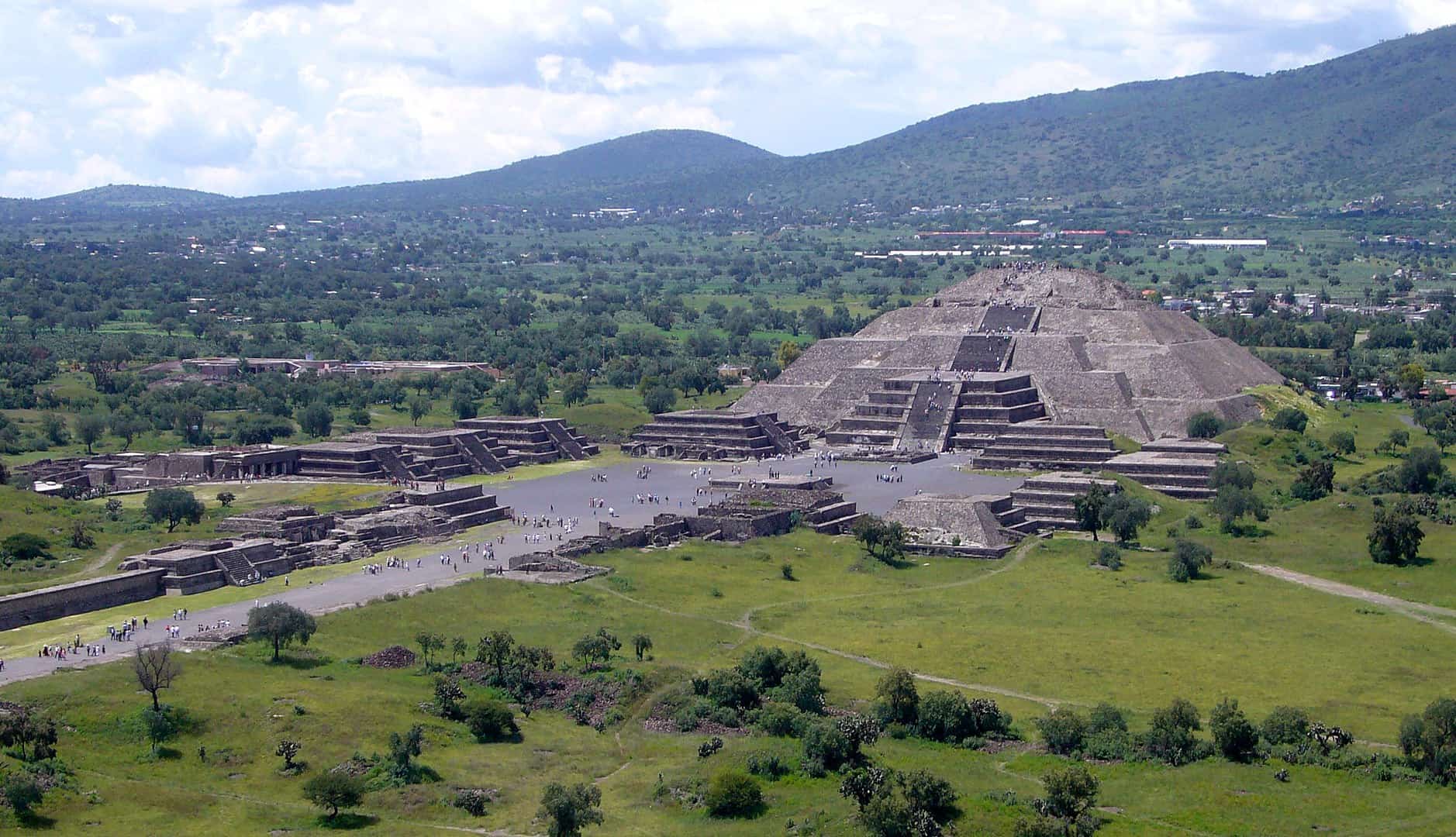
Teotihuacan’s Pyramid of the Moon honored more than just the Moon.
The pyramid also honored the Great Goddess of Teotihuacan. The name is actually a placeholder since as we’ve mentioned, Teotihuacan’s language has never been recovered. That said, archaeologists have also discovered that even with Teotihuacan’s fall, the goddess’ worship didn’t stop.
In particular, the Aztecs knew her as Xochiquetzal, which translates as Precious Flower, goddess of beauty, and female fertility. They also saw her as the protector of wives and mothers during childbirth and patron of feminine crafts like weaving and embroidery.
Teotihuacan’s Citadel was the heart of the city.
Here, the political leaders of the city regularly met and performed their duties. Not only did they govern their city and people, but they also conducted talks with the people of surrounding lands.
For those reasons, the people of Teotihuacan built the Citadel around the buildings where their leaders worked. This not only provided them protection but also provided a ritual distinction between those leaders and their people.
Teotihuacan’s Citadel also included the Pyramid of the Feathered Serpent.
Again, much like the Olmecs before them and the Aztecs much later, the people of Teotihuacan worshipped the Feathered Serpent. The Pyramid of the Feathered Serpent is the third-highest in the city, but the most important, considering its position in the Citadel.
In addition to the government buildings, the Citadel included a square in front of the pyramid. Able to accommodate over 100,000 people, archaeologists believe that it was built for witnessing religious rites at the Pyramid of the Feathered Serpent. There’s one for Mexico facts that show its centuries of heritage.
The Pyramid of the Sun is the biggest pyramid in Teotihuacan.
It’s also placed midway along the Avenue of the Dead, from the Citadel in the south to the Pyramid of the Moon in the north. That said, it’s also one of the most mysterious pyramids in Mexico, with even the name an assumption. Archaeologists don’t actually know if the pyramid worshipped the sun or some other deity.
Teotihuacan also worshiped Tlaloc.
Teotihuacan inherited the rain god from the Olmecs and later on passed it on to the Toltecs and Aztecs. Strangely enough, worship of Tlaloc at Teotihuacan also took place at the Pyramid of the Feathered Serpent. Sculpted faces symbolic of Tlaloc form part of the pyramid’s facade, alongside the feathery, draconic sculptures of Quetzalcoatl.
Teotihuacan worshipped other gods besides Quetzalcoatl and Tlaloc.
Unfortunately, their names and aspects remain unknown. Even their names in academic material are all assumptions based on appearances in art. These include the old god, the netted jaguar, the pulque god, and even the flayed god.
The flayed god is actually something of an exception, though. Archaeologists think the Toltecs and Aztecs may have continued his worship, as Xipe Totec, the Flayed Lord.
The ethnicity of Teotihuacan’s people remains debated to this day.
One theory suggests that the Teotihuacan’s people were ancestors of the Nahua people, which included the Aztecs. Another theory claims that the people of Teotihuacan were Mayans. Meanwhile, other archaeologists believe that Teotihuacan was a multiethnic city, with people from every culture in the region living in it.
As with the Olmecs, the cause of Teotihuacan’s fall remains a mystery.
The earliest theory blamed the Toltec expansion across Central Mexico for Teotihuacan’s fall. Archaeologists base this on what appears as battle scars in the ruins, dating to the 7th and 8th Centuries AD.
However, other scholars argue that internal revolt born of drought and failed harvests caused Teotihuacan’s fall, made worse by a nearby volcanic eruption. Even more archaeologists argue that there’s no single cause for the city’s fall. Instead, they argue that a combination of causes caused Teotihuacan’s collapse.
The Mayans also influenced the peoples and cultures of pre-Columbian Mexico.
Archaeologists concluded that Mayan architects and their engineering principles helped build Teotihuacan. This is also why some archaeologists argue that Teotihuacan’s people were actually Mayans themselves.
They base this argument on the little to no similarity between the architecture of the Olmecs and of Teotihuacan. Other influences from the Mayans on pre-Columbian Mexico include mathematics and astronomy.
The Toltecs rose to power in the aftermath of Teotihuacan’s collapse.
They built their capital in Tula, in what is now the modern Mexican state of Hidalgo. They also first appeared in the 6th Century AD, though their origins remain a matter of debate among archaeologists today.
Over the following centuries, they built an empire that spanned Central Mexico and parts of Northern Mexico.

The Toltecs equated King Topiltzin in the 10th Century to Quetzalcoatl.
Also known as Cē Ācatl Topiltzin Quetzalcoatl, he reigned over the Toltec Empire during its first golden age. His reign also provided the basis for much of the Aztec myth surrounding the god whose name the king shared. In particular, archaeologists theorize King Topiltzin tried to break the power of the priests, and end the practice of human sacrifices.
In the end, however, the priests won, and King Topiltzin exiled from his city. Making his way to the Gulf coast, he committed suicide by burning.
After his death, Topiltzin’s legacy became grafted with Quetzalcoatl’s belief system.
Topiltzin’s opposition to human sacrifices became part of Quetzalcoatl’s own teachings. The king’s journey and suicide also became a legend, that after losing his argument with the other gods over the practice of human sacrifice, Quetzalcoatl departed to the east. But before he departed over the sea, he promised to return and to finish what he started.
King Topiltzin’s death marked the beginning of the first period of decline for the Toltecs.
It didn’t last long, though. By the end of the 10th Century, the Toltecs had regained their strength, and expanded east, into the Yucatan Peninsula. There, they conquered the Mayans and built a new capital at Uxmal. Afterward, they continued to expand south into what is now Guatemala and conquering the native Mayans as they went.
The Toltec Empire finally collapsed towards the end of the 11th Century.
The collapse began with crop failures and famines from 1070 to 1077. Invasions by Chichimecs from Northern Mexico in the early-12th Century then brought the weakened empire down. The Toltecs scattered across Mexico, politically fragmenting the region into warring states and kingdoms that stayed the norm until the rise of the Aztec Empire.
Toltec culture didn’t die with their empire.
Toltecs actually made up the rulers of many of the states and kingdoms that made up Mexico after their empire’s fall. Other rulers, remembering the mighty Toltec Empire and impressed by the ancestry of their Toltec peers, adopted elements of Toltec culture. Even the later Aztecs followed this trend, their royalty and nobility alike claiming descent from the Toltecs. Well, flattery isn’t bad if it’s true, as we remember the old saying here at Mexico Facts.
The Toltecs also made impressive architectural works.
They’re also an enduring example of Mexico Facts, that’s for sure. Among the most famous include the warrior columns, which once held up the roofs of Toltec palaces and temples. Today, those buildings have since collapsed, but the pillars still stand.
Carved from volcanic basalt, the name comes from how the Toltecs carved each pillar in the image of one of their own warriors in full armor. Under the Toltecs, the Mayans carved their own warrior columns, and later on, the Aztecs also carved warrior columns of their own in their awe of the Toltecs’ legacy.
Other examples of Toltec architecture include the chac mools.
Chac mools are sculptures of men lying on their backs, supported by their elbows while their heads look 90 degrees to 1 side. They also have bowls or discs on their chests. The exact symbolism remains unclear, but archaeologists theorize they may represent human sacrifices. In particular, the bowl or disc on their chests may represent their hearts offered to the gods.
The Toltecs also contributed several gods to the Aztecs’ later pantheon.
The most important of those was Tezcatlipoca, the Smoking Mirror. He was the god of the night, of magic, obsidian, and jaguars. Both the Aztecs and the Toltecs also saw him as the protector of slaves and feared Tezcatlipoca’s punishment against those who abused them.
As the god of obsidian, Tezcatlipoca was also the guardian of human sacrifices.
Specifically, he received the sacrifices offered by Humanity and ensured they reached their proper recipient. This also made him the archenemy of Quetzalcoatl. In the myth, it was Tezcatlipoca who tricked Quetzalcoatl to sleep with his sister, leading to his disgrace and exile.
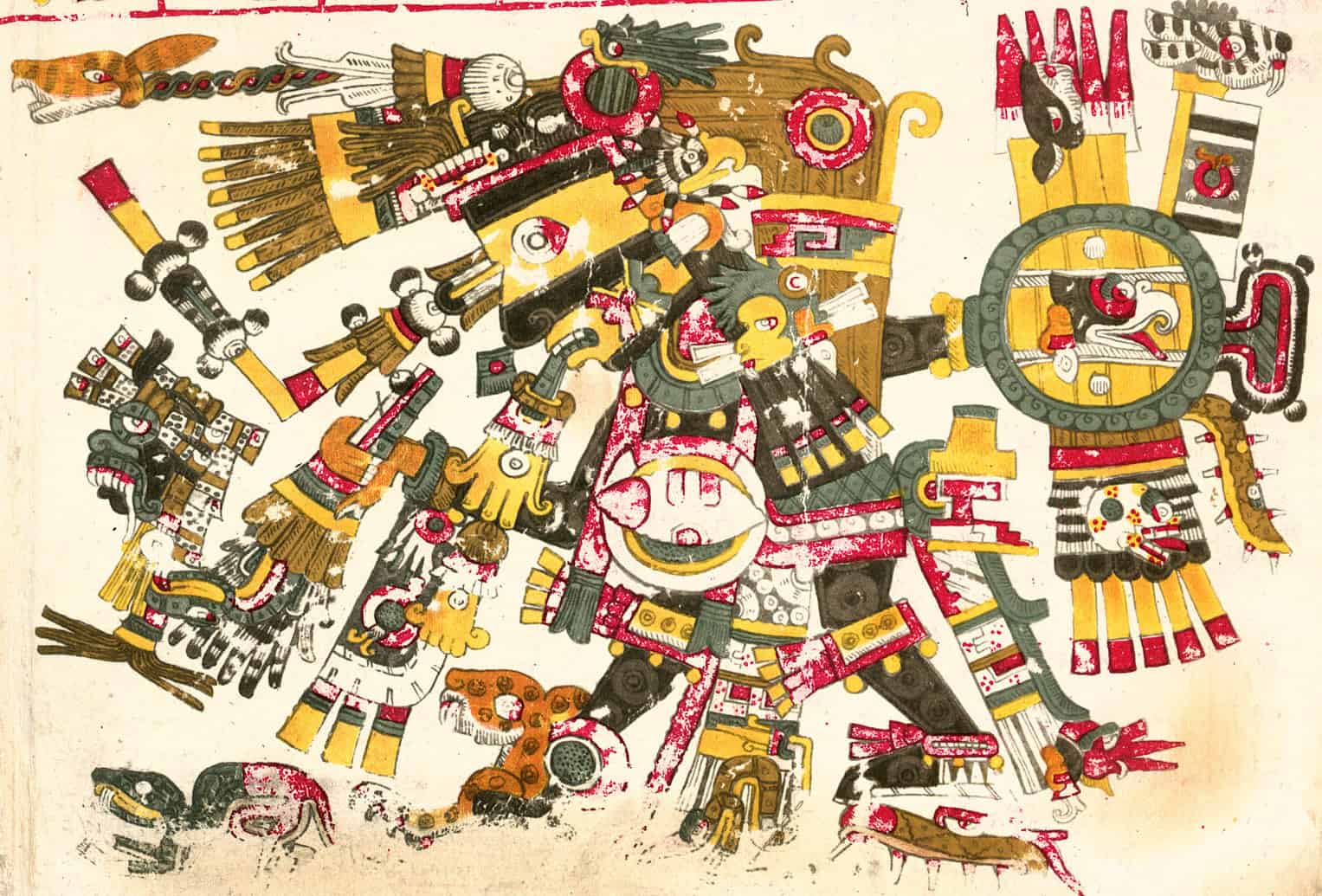
The Zapotecs arose in Southern Mexico as both Teotihuacan and the Toltecs rose and fell.
The Zapotecs actually predated both the Toltecs and even Teotihuacan, going back to the 6th Century BC. In particular, their culture lived in and expanded across the Oaxaca Valley of Southern Mexico.
They built their capital at Monte Alban, and even as the Toltecs conquered an empire after Teotihuacan’s fall, the Zapotecs did the same in Southern Mexico. In fact, by the time of the Aztec Empire, the Zapotecs had complete control of the South Mexican Highlands.
The Aztecs and Zapotecs later fought several wars with each other.
After the Aztecs conquered all of Central Mexico, they found the Zapotecs opposing their expansion to the south. This led to a series of wars from the late-15th to the early-16th Centuries. Despite repeated attempts, the Aztecs failed to conquer the Zapotecs.
It would take the Spaniards themselves to bring the Zapotec Empire down, between 1522 to 1527. Even then, Zapotec revolts against Spanish rule erupted twice in the latter part of the 16th Century, and once in the 18th Century.
The Aztecs based their alphabet on that of the Zapotecs.
Here’s an ironic example of Mexico Facts, considering the repeated wars between their empires. That said, even with the wars, they traded extensively with each other in peace, even before the rise of the Aztec Empire. Archaeologists theorize this is why the Aztecs based their alphabet on that of the Zapotecs, to better communicate and trade with them.
The Aztecs first appeared in Mexico in the 13th Century.
The Aztecs claimed to have come to Mexico from Aztlan, something their name reflects. Aztec, that is people from Aztlan. Aztlan’s location remains unclear to this day, though usually theorized as somewhere in Northern Mexico or what is now the Southern United States.
Other archaeologists argue that Aztlan does not actually exist, and merely a myth the Aztecs used to make themselves distinct from other Mexican peoples.
The Aztecs didn’t actually call themselves the Aztecs.
To them, Aztecs included everyone who spoke the Nahuatl language. Instead, they called themselves the Mexica, specifically referring to the Mexica region around their capital city of Tenochtitlan. In other words, all Mexica were Aztecs, but not all Aztecs were Mexica.
Historians describe the Aztecs’ rise to power as a rags to riches story on a national scale.
This only partly results from the Aztecs’ being the youngest of the great empire of Central Mexico. The Aztecs were also newcomers to the region, having appeared according to local records only in the 13th Century.
They also started out as vassals to 1 of the local kingdoms, Azcapotzalco. The Aztecs’ successful revolt against Azcapotzalco in 1428 marked the beginning of the Aztecs’ rise to power.
The Aztec Empire wasn’t really an empire.
Historians only call it an empire for the sake of convenience. In reality, the Aztec Empire was more an acknowledgment of the various nations and kingdoms of Central Mexico of Aztec dominance. They backed this acknowledgment up with regular tributes, including food, raw materials, finished products, and of course, human sacrifices.
Even the Aztecs didn’t call their empire an empire.
They called their domain the Ēxcān Tlahtōlōyān, or Triple Alliance, between the 3 cities of Tenochtitlan, Texcoco, and Tlacopan. Though the alliance’s members were all equals on paper, in reality, Tenochtitlan dominated the alliance.
At its height, between 200,000 to 400,000 people called the city home, and Tenochtitlan’s ruler made all the major decisions for the alliance. In contrast, Texcoco and Tlacopan’s populations never rose over 50,000 and played only limited roles in making decisions for the alliance.
The Aztecs placed more emphasis on human sacrifices than previous cultures.
All Mesoamerican civilizations considered human sacrifices important. So much so, that in war they all made a point to prioritize capturing the enemy over killing them. They would then offer the prisoners up as sacrifices to the gods.
The Aztecs though needed sacrifices so much that it became problematic in peacetime. This led to the Flower Wars, ritualized annual wars between them and their vassals in order to select worthy sacrifices to the gods.
The Spaniards arrived in Mexico in the 16th Century.
Contrary to what population fiction says, the Aztecs did not see the Spaniards as gods. They did not see Hernan Cortez as Quetzalcoatl returned, as later Spanish propaganda proclaimed.
They did, however, try to buy the Spaniards off, offering gold, jade, and obsidian as gifts. In return, they asked the Spaniards to leave. The Spaniards accepted the gifts but refused to leave.
The Spaniards turned the Aztecs’ vassals against them to conquer their empire.
The Aztecs played on the other Mexicans’ resentment against Aztec rule and promised them freedom if they helped the Spaniards. Because of this, a native woman named Malintzin helped the Spaniards, serving as both translator and adviser to Cortez. Historians agree that without her help, the Spanish Conquest of Mexico would have taken longer to achieve.
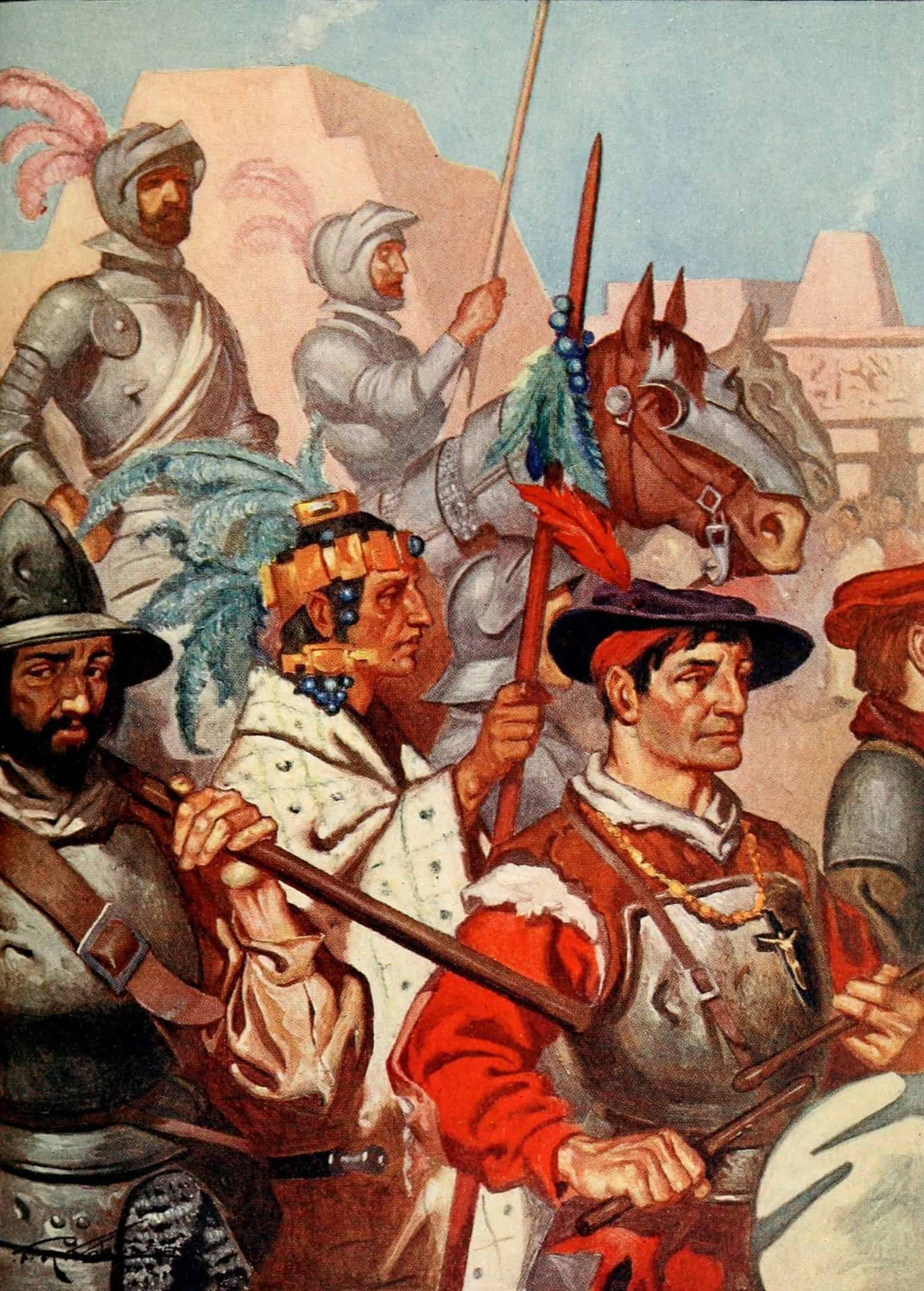
Malintzin is also known as La Malinche.
This, in turn, serves as the origin of the Mexican insults malinchismo and malinchista. Both refer to someone who abandons their native culture for a foreign one. It references Malintzin’s help to Cortez in conquering Mexico, as well as blaming Malintzin for all the oppression that followed.
Starting in the 20th Century, feminists have struggled to redeem her memory, arguing she only did the best she could in her position. They also call for her recognition as the founding mother of a new Mexican people. Even so, the stigma of her association with the Spanish Conquest endures.
The Aztecs actually defeated the Spaniards in their first battle.
This was the La Noche Triste, resulting after Spaniards massacred celebrating warriors and nobles in the Templo Mayor. The people of Tenochtitlan rose up in outrage and forced the Spaniards to retreat into the palace just to survive. Attempts to use Emperor Moctezuma as a hostage and a puppet failed, with the Emperor killed by his own subjects.
Afterward, they crowned his brother Cuitláhuac the new Emperor. The Spaniards escaped at night, though they had to abandon all their loot and heavy weapons in the process. Definitely an example of Mexico Facts to remember, no doubt about it.
Plague became the Spaniards’ greatest ally in conquering Mexico.
Specifically, smallpox, carried by the Spaniards themselves from Europe. But while the Spaniards had a degree of immunity to the disease, the Aztecs and other Mexicans did not. Even as the Spaniards retreated to try again to retake Tenochtitlan, smallpox spread across the city.
Over half the city’s population died of the disease, including Emperor Cuitláhuac. This left the Aztecs’ leaderless, and short on numbers to defend the city. Even so, when the Spaniards came, the remaining Aztecs fought to the death against the invaders. Without a doubt a sad and tragic example of Mexico Facts.
The Spaniards later rebuilt Tenochtitlan into Mexico City.
Despite the fall of the Aztecs, the Spaniards took on much of their legacy. They recognized Tenochtitlan’s central position in the region, making it suitable as the Spaniards’ colonial capital.
Of course, they tore down much of the old city, such as the Templo Mayor and other, lesser temples. And on top of the ruins, the Spaniards built churches and even renamed the city from Tenochtitlan to Mexico City.
The Spaniards also retained the Aztec nobility.
They asked that the nobles only swear loyalty to the King of Spain, and of course, convert to Christianity. The nobles, sensing the changing times with the fall of Tenochtitlan, generally accepted the Spanish offer.
In fact, the Spanish conquest of Mexico after Tenochtitlan’s fall owes much to the assistance of local Aztec lords. In turn, not only did the Spaniards respect the local lords’ properties, they turned to them to govern the colony on a local level.
Emperor Moctezuma’s descendants also submitted to Spain.
His grandson was first among them, Ihuitemotzin, who became baptized as Diego Luis de Moctezuma. He married a Spanish noblewoman, and their son Pedro Tesifón de Moctezuma elevated as the first Count of Moctezuma.
His descendants later added Duke of Atrisco to their titles, and which remain recognized by the Spanish Crown to this day. Talk about rising from the ashes, as we see it here, at Mexico Facts.
Mexico became the most important of Spain’s colonies.
The colony’s rich deposits of gold and silver made Spain the richest and most powerful country in Europe. Mexico’s central position between Spain and her colonies in the Americas and Asia also further increased Mexico’s importance.
In order to better manage Spain’s global empire, the Viceroy of Mexico became the direct overseer of Spain’s other colonies. This reduced the need to wait until issues arrived at Madrid, and for decisions made to return.
Despite its importance, Mexico seethed with discontent against the Spanish.
Even with major infrastructural work such as roads, schools, and hospitals among others, the Mexicans resented Spanish rule. In particular, they resented Mexico’s wealth leaving the country for Europe. Racism was also another issue that fed into resentment against Spain.
Revolts broke out several times over the centuries but were always put down thanks to the support of local landowners and the church. Even among those landowners though, resentment seethed, and which only grew with the success of the American and French Revolutions.
The priest Miguel Hidalgo y Costilla began Mexico’s war for independence in 1801.
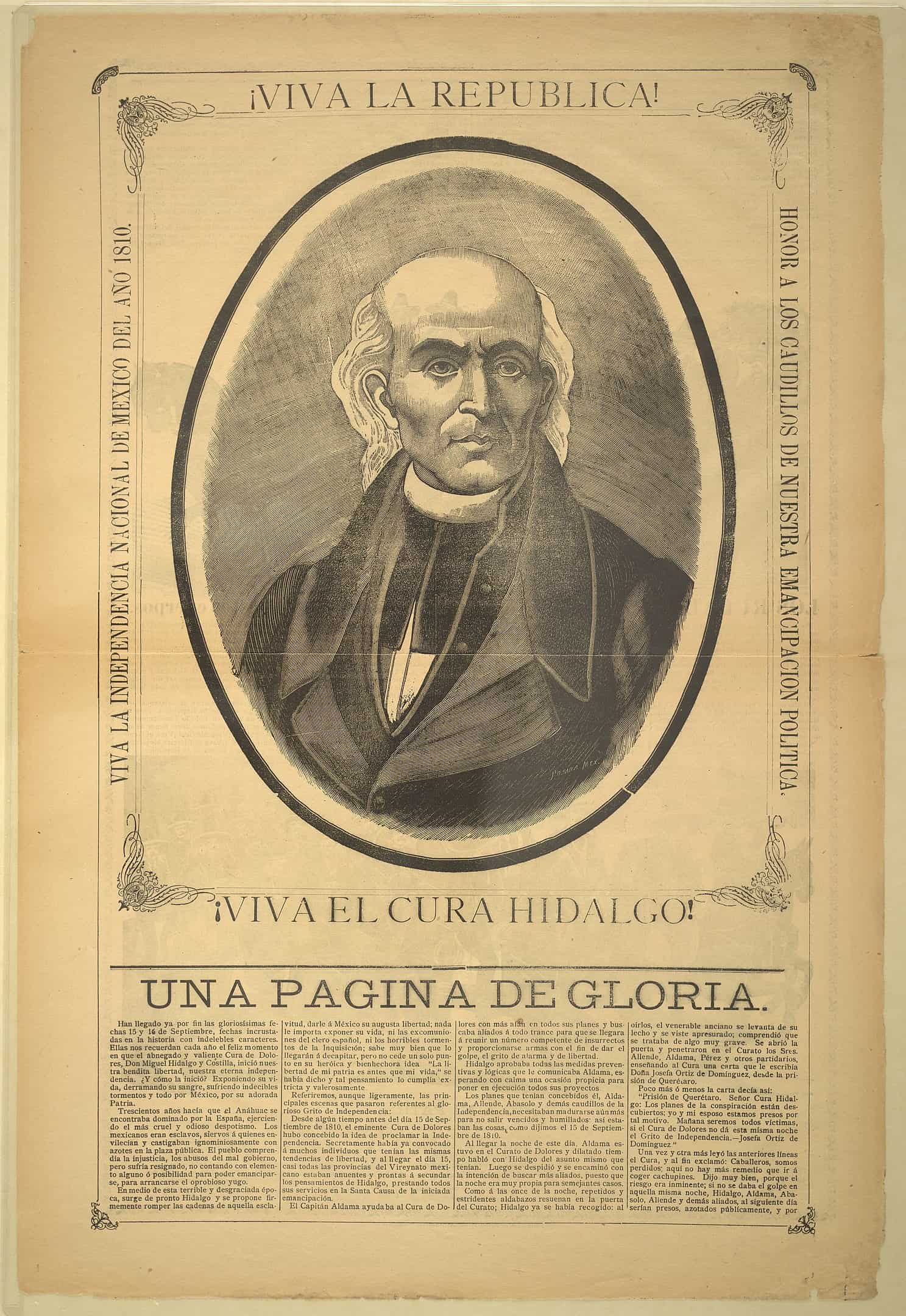
Historians still aren’t sure about Hidalgo’s immediate reasons for a revolt, though the long-term ones are much more clear. They know that Hidalgo’s opinions on faith had led to clashes with the Inquisition and that he had republican sympathies. Hidalgo also opposed the dominance of Spanish immigrants over native Mexicans.
Regardless of the reason, a revolt erupted in 1801, with Hidalgo gathering support from the people, the local church, and even local landlords. For this, modern Mexicans call him the Father of Mexican Independence. Tragically, he never saw its end, as the Spaniards captured Hidalgo in 1811. Brought before the Inquisition, they stripped him of his priesthood, and executed him and other rebel leaders.
Other revolutionary leaders continued the fight for Mexico’s freedom.
After Hidalgo’s death, another priest, Jose Maria Morelos led the revolution until 1815. In 1815, the Spaniards captured Morelos, and like Hidalgo before him, executed him. General Vicente Guerrero then took over the revolution and led it until 1821. In 1821, Spanish Colonel Agustin de Iturbide defected to the revolution, inspiring other defections.
This forced Viceroy Juan O’Donoju to make peace with the revolutionaries, recognizing Mexico’s independence with the Treaty of Cordoba. This led to the founding of the First Mexican Empire with Iturbide as Emperor, though Spain continued to try and reconquer Mexico until 1836. With the signing of the Treaty of Santa Maria-Calatrava in that year, Spain finally gave up on reclaiming their former colony.
Mexico became a republic in 1824.
Iturbide’s rule left many in Mexico dissatisfied, leading to an army coup that established the First Mexican Republic. It was the republic that defended Mexico’s independence from Spain, but it was also the republic that lost a war with America in 1846. This, along with a series of controversial reforms, sparked a wave of civil wars born from the government’s apparent weakness. The civil wars left Mexico weak and vulnerable to French intervention in 1861.
In 1864, the French organized the Second Mexican Empire under Maximilian I. The new Emperor proved unpopular and seen by the Mexican people as a foreign puppet, and republican rebellions quickly erupted. With the end of the American Civil War in 1865, the USA began supporting the rebels. The French finally withdrew their support in 1867, leading to the empire’s collapse. The rebels executed Maximilian I for treason and proclaimed the Second Mexican Republic.
Mexico in the Second Republic prospered under President Porfirio Diaz.
American and British investment saw an expansion of Mexican infrastructure, such as railroads and the telegram. Art and science flourished under Diaz’s leadership, and the president also reduced the size of the army to prevent coups in the future. He also expanded the police though and used them to enforce his political control.
All in all, Diaz’s leadership proved a mixed bag, marked with economic inequality and political repression. Diaz’s failure to select and prepare a successor also set the stage for trouble after his retirement. This was the Mexican Revolution of 1910 to 1920 when a series of army generals and peasant leaders fought for control of the country.
Stability returned to Mexico from 1921 onward.
Ironically, former generals became Mexico’s presidents until the late 1940s. Even more paradoxically, they worked to bring the military back under civilian control. Land reform and the establishment of the Mexican national oil company Pemex also took place at this time.
Mexico joined the Allies in WWII, and after the war saw the election of civilian presidents. Social inequality remained a problem, though, and while many parties existed in the government, the Institutional Revolutionary Party dominated Mexico during the course of the 20th Century.
Mexico entered a new phase of history in the 21st Century.
The biggest difference of all was the Institutional Revolutionary Party’s defeat in the 2000 Elections. And while the party regained the presidency in 2012, they failed to gain a majority in the Mexican Congress. Modern Mexico also still suffers from considerable social inequality, high crime rates, government corruption, and a stagnating economy.
Mexico produces much of the world’s electronic products.
Talk about 21st Century economies, as we see it here at Mexico Facts. Mexico actually ranks sixth among the world’s electronics producers, after Taiwan, South Korea, Japan, the USA, and China. In fact, only China exports more electronics to the USA than Mexico does. All in all, electronics make up 30% of Mexico’s total exports.
Mexico makes the most cars in North America.
Chrysler, Ford, and General Motors have operated in Mexico as far back as the 1930s. Volkswagen and Nissan began operations in Mexico in the 1960s, with Kia and Audi joining in in 2016. Today, Nissan plans to expand its operations in Mexico, while BMW and Mercedes-Benz both currently building plants in the country.
Mexico has its own car companies.
These include DINA S.A. and Mastretta, the latter especially known for the Mastretta MXT Sportscar. The former, though, primarily focuses on building trucks and buses for domestic use.
Canada and the USA are Mexico’s biggest customers.
Almost 50% of Mexico’s imports go to Canada and the USA, and an estimated 45% of Mexico’s imports also come from Canada and the USA. Some analysts even argue that Mexico especially depends on the USA, something causes concern within Mexico.
Mexico heavily depends on mobile phones for communication purposes.
The statistics reflect this, with 82% of Mexicans owning mobile phones, compared to just 40% in other Latin American countries. This results from Mexico’s mountainous geography, which makes it complicated and expensive for landline communications to cover the whole country.
Mexico also has its own satellite service through Satmex, which dominates the Latin American market while also operating in North and South America. Talk about advanced examples of Mexico Facts, no matter we look at it.
The Mexican oil industry produces $86 billion every year.
Mexico leads the world as the 6th-largest oil producer in the world, pumping an estimated 4 million barrels of oil per day. Aside from crude oil or gas, Mexico exports refined petrochemicals and fuels to customers around the world.
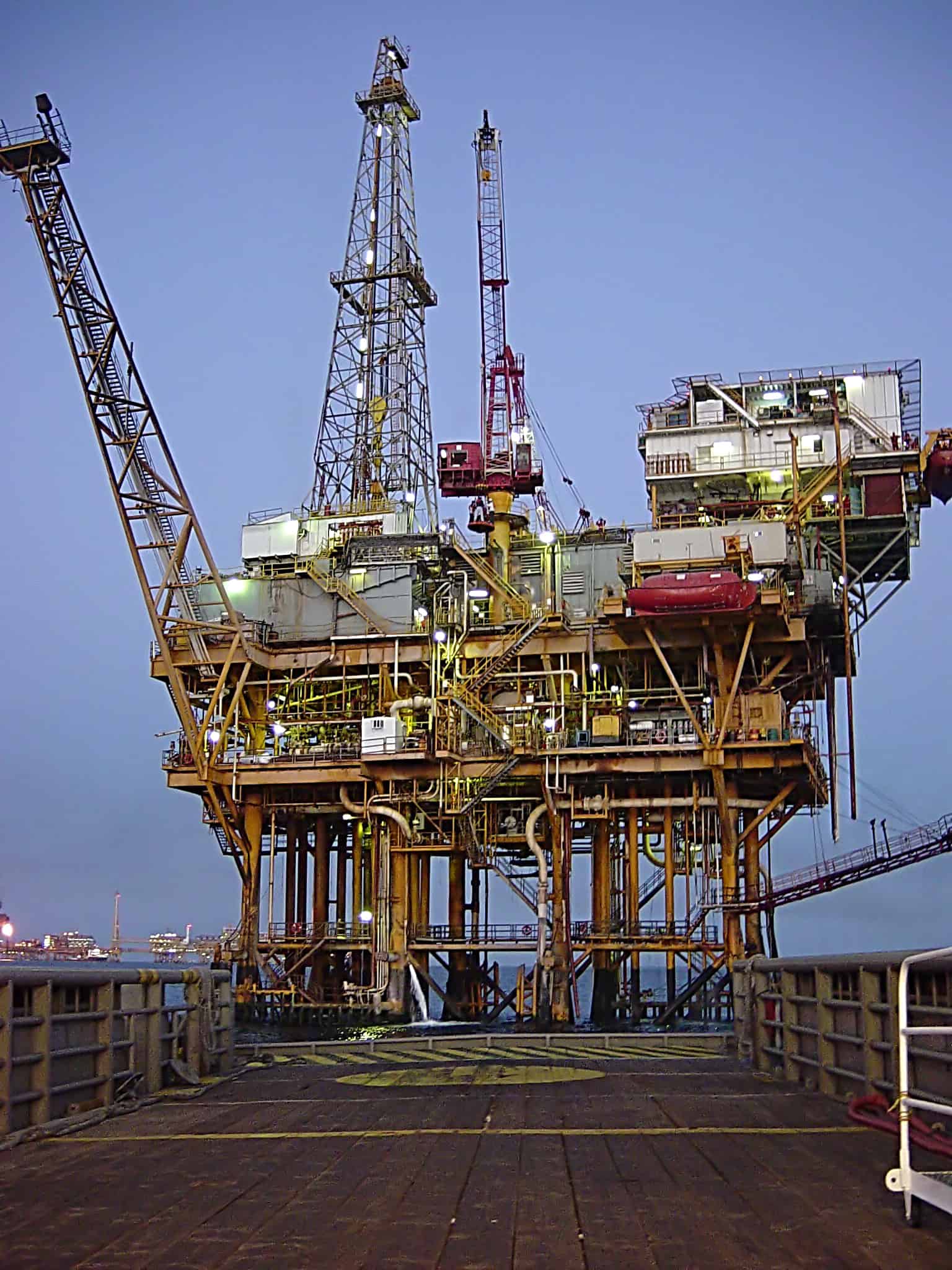
Chicoasén Dam in Mexico is one of the biggest dams in the world.
Built on the Grijalva River in 1980, it stands 261 meters high and 485 meters long. Its reservoir holds an estimated 1.6 million m³ of water and produces an estimated 2000 MW of electricity per day. It also has the distinction of the tallest dam in North America.
Solar energy produces large amounts of electricity to Mexico.
Today, Mexico has over 1 million m² of solar panels in operation across the country. Solar energy produces over 600 MW of electricity, making Mexico the 2nd-biggest solar energy producer in Latin America. Talk about green examples of Mexico Facts.
Wind also makes up a large part of the Mexican energy industry.
Here’s another example of green Mexico facts. Mexican wind farms usually stand in coastal regions, such as in the Yucatan Peninsula facing the Caribbean Sea. On the other side of the country, many wind farms also stand facing the Gulf of California. All in all, wind energy in Mexico accounts for an estimated 600 MW of electricity per day.
Mexico ranks 3rd in terms of geothermal energy among the countries of the world.
Mexico stands on the Pacific Rim of Fire, placing the country near many volcanoes. Those same volcanoes may even have ended one or more of Mexico’s ancient civilizations. Today, though, they produce up to an estimated 7 TW of electricity per day in a clean and non-polluting manner.
Only the USA enjoys more tourists than Mexico in the whole of North America.
Tourists come to the country to see for themselves the remains of Mexico’s ancient civilizations. Modern Mexico’s fusion of European and Mesoamerican culture also draws plenty of tourists, who come to experience it in the form of cultural festivals, sampling the local cuisine, and of course, touring the country. Other tourists come to simply relax, enjoying Mexico’s many beaches and resorts.
Mexico’s Pacific coast includes many of its most popular beaches.
Acapulco has the most popular of them all, though they have become crowded in recent years. The city’s cliff divers remain famous, particularly for diving from cliffs over 40 meters high into the waters below.
Other popular destinations on Mexico’s Pacific coast include Puerto Escondido, which attracts plenty of surfers every year. Snorkeling enthusiasts find themselves drawn to Puerto Angel, while nature enthusiasts similarly find themselves drawn to Zipolite. The Michoacan coast further to the north also draws plenty of surfers every year.
Mexico’s Carribbean coast also enjoys plenty of tourists.
The resort town Cancun is an especially popular destination for university students on vacation. Nature enthusiasts also flock to the ecological reserves of Xcaret and Xel-Ha. To the south of Cancun is Tulun, which draws tourists with its white-sand beaches, as well as cliffside ruins belonging to the ancient Mayans.
More tourists come to Mexico in some parts of the year than others.
Tourist arrivals usually peak in midsummer, and again in December. Tourist arrivals also tend to go up before Easter. Most tourists tend to come from Canada and the USA, as well as other Latin American countries. A surprising twist to this example of Mexico Facts is that comparatively few tourists actually come from Europe and Asia.
Mexico City is 1 of the most important tourist destinations in Mexico.
The city is not only Mexico’s biggest city and the national capital, but it’s also a UNESCO World Heritage Site. Popular places to visit in the city include the ruins of the ancient Aztec capital of Tenochtitlan, over which modern Mexico City stands. Others include the Metropolitan Cathedral, as well as the National Palace, formerly the residence of the Viceroy of New Spain.
Tourists in Mexico often travel from Mexico City to see other sights in Central Mexico.
These sights include the ruins of the ancient cities of Teotihuacan and Tula. Also accessible from Mexico City is Tepotzotlan, an Aztec city that remains inhabited to the present day. Tourists can also easily travel to and see colonial-era cities such as Puebla and Taxco among others from Mexico City.
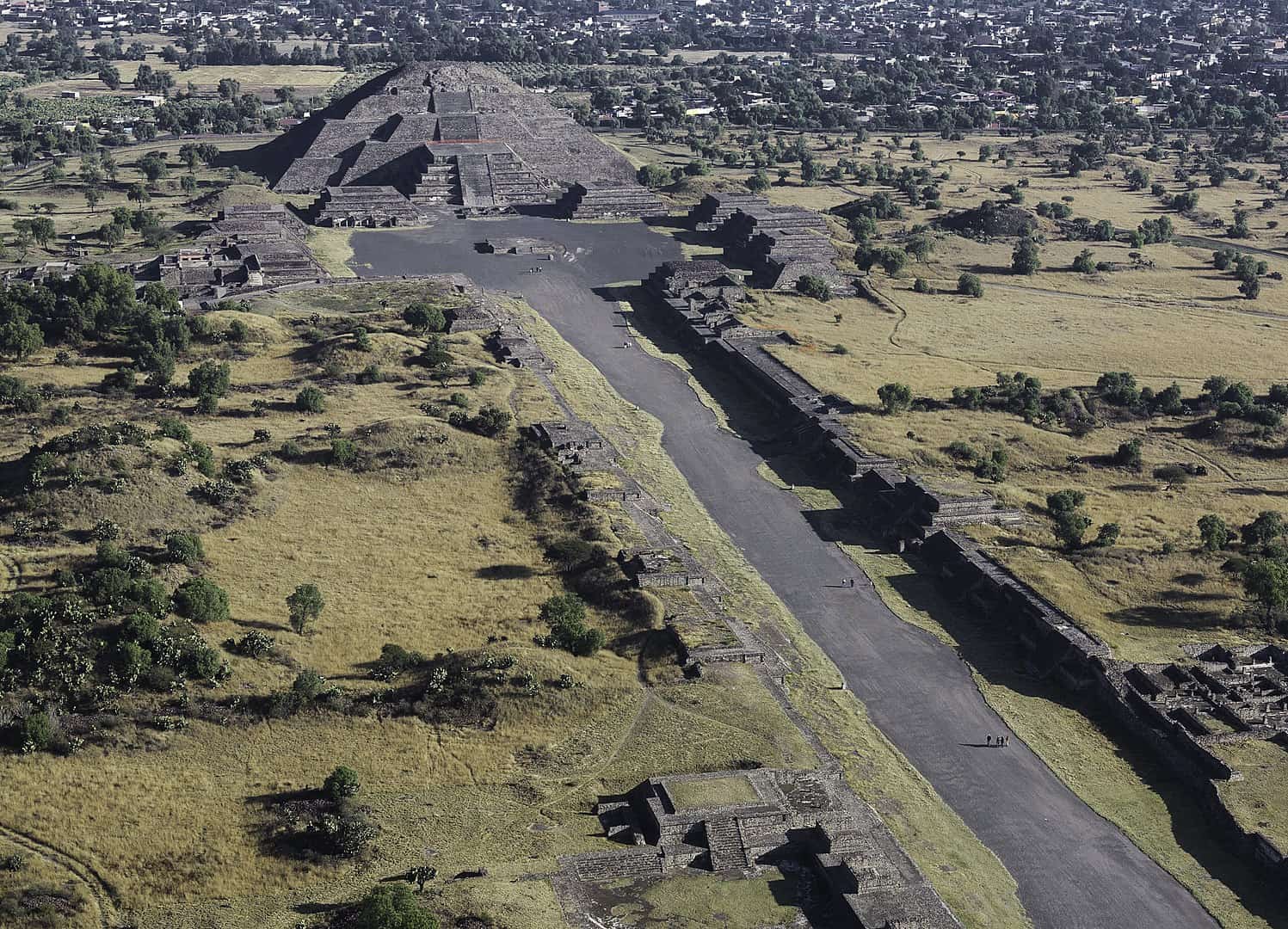
Morelos State is another major tourist destination in Central Mexico.
The temperate climate of its capital, Cuernavaca, attracts plenty of tourists, leading to a booming hotel and resort industry. Morelos also has plenty of historical sites of its own, such as the Palace of Cortez, where the conquistador lived after his conquest of Mexico. Other historical sites include the ruined Aztec cities of Teopanzolco and Xochicalco.
A popular tourist destination in Northern Mexico is La Quemada.
It’s also a mysterious one, as archaeologists still don’t know who built the city. Some think it’s the legendary Chicomoztoc, the original home of the Nahua people which included the Aztecs. Others argue that La Quemada was actually an outpost of the ancient city of Teotihuacan. In the end, though, the mystery behind the ruined city just adds more to its appeal for tourists and visitors.
Southern Mexico also attracts plenty of tourists.
Many go to Southern Mexico to see the ruined capital city of the Zapotecs, Monte Alban. Most, however, go to Southern Mexico to see and obtain examples of its rich handicraft industry. Major handicrafts tourists find in Southern Mexico include pottery, wood and stone carvings, and even rugs and other textiles.
Mitla in Southern Mexico is another major tourist destination.
The name comes from the Nahuatl name Mictlan, which is actually the name of the Aztec underworld. Mitla gained this name thanks to how the Zapotecs and the Mixtecs used the city as a place to bury their dead in elaborate tombs and mausoleums.
In addition to its ancient tombs, Mitla’s fame also comes from its unique art. Specifically, many of the city’s buildings and tombs feature mosaics and friezes made without the use of mortar to keep the pieces together. No other place in Mexico features the same techniques.
Tourists also go to Mexico to see Mayan ruins.
These tourists head to the Yucatan Peninsula, where they can find sites such as Chichen Itza and Uxmal. Other sites tourists commonly visit in the Yucatan include the state capital of Merida, with its booming textile and handicraft industry.
Tourists go to Guadalajara in Western Mexico to enjoy many of Mexico’s most famous traditions.
These include tequila, first made in the city, as well as mariachi music, also first played in the city. Mexican cowboys, locally called charros, also come from the city. Guadalajara also offers attractions for more intellectually-inclined tourists. These include the Guadalajara International Book Fair, as well as the Degollado Theater.
The Guadalajara International Book Fair is the most important cultural event in the Spanish-speaking world.
Here’s an example of Mexico Facts for the bookish tourist. First held in 1987, the University of Guadalajara hosts the fair for 9 days every year starting on the last Saturday of November. Showcases in the fair include books and other literary materials from around the world, many accompanied by their authors.
Cultural events often accompany the fair, such as by musicians. Ever since 2013, statistics show that over a million visitors attend the fair.
One of the most famous Mexican holidays is the Day of the Dead.
The festival’s origins go back to Aztec times, who celebrated it at the end of the summer. The Aztecs celebrated it over the course of a whole month, typically marked with ritualized human sacrifices. Following the Spanish Conquest of Mexico, the Roman Catholic Church Christianized the tradition. Human sacrifices naturally stopped, and the time and duration of the festival changed to match the Christian Day of All Souls on November 1.
However, many Aztec elements remain, such as the handing out of marigolds, flowers they saw as sacred to the death goddess Mictecacihuatl. Other traditions going back to the Aztecs include offering food and drink to the tombs of the dead, as well as the making of Calaveras, skull or skeleton-shaped gifts made from sugar or clay.
Northern Mexico originally did not celebrate the Day of the Dead.
This is partly thanks to the Aztecs’ limited influence in the region during the days of their empire. Also, the people and church in the north saw the Day of the Dead as a Christianized pagan tradition and rejected it out of Christian piety. In the 20th Century, though, the Mexican government declared the Day of the Dead a national tradition. This led to its celebration in Northern Mexico as well.
Many ingredients and food used around the world come from Mexico.
These include avocados, chili, corn (maize), tomato, and zucchini among others. Many of their names also have roots in the native Nahuatl language. Avocado, for instance, comes from āhuacatl, chili comes from chīlli while tomato comes from tomatl. Talk about a global legacy, as we see it here, at Mexico Facts.

Mexico boasts 1 of the world’s oldest fusion cuisines.
Considering fusion food’s reputation, this one’s a very surprising example of Mexico Facts. It goes back to the 16th Century, with the Spanish Conquest that introduced many new ingredients to the Spanish diet. Those include rice, as well as meats such as pork, chicken, and beef among others, as well as dairy products.
Cheesemaking is an important industry in Northern Mexico.
It’s also a traditional industry, with many kinds of cheese made in countryside homes before going on sale at the market. In particular, the state of Chihuahua is very famous for its cheeses.
Corn is the staple food in Mexico as a whole.
Unsurprising, considering it was in Mexico that humans first farmed and harvested corn for food. It was also from Mexico that corn spread to the rest of the world, both before and after the Spanish Conquest. Though commonly eaten fresh, Mexicans mostly dry and process their corn into masa. It’s from masa that Mexicans make their varied corn dishes from, most commonly the tortillas famed around the world.
A common ingredient in Mexican cuisine is chili peppers.
This goes back to before the Spanish Conquest, with the Spaniards later observing that the natives did not see a meal as complete without any chili peppers. This tradition continued to the present day, with Mexicans considering chili peppers and the sauces made from them an important part of their national identity.
In fact, Mexicans differentiate their dishes not on the meats and vegetables they include, but on their sauces and stocks, which always include chili peppers in various proportions. Naturally, they’re all very spicy regardless of the actual proportion.
Southern Mexico has a reputation for exotic ingredients.
In general, these ingredients are usually insects. Grasshoppers are the most common, locally called chapulines, sold or served dried or salted. Other insects eaten as part of South Mexican, or specifically Oaxacan, cuisine includes ants and even grubs. Archaeologists have confirmed them as part of the regional cuisine long before the coming of the Spaniards, and a major source of protein for the local people.
Mexicans consider dinner the most important meal of the day.
They usually begin with soup served with pasta, the latter garnished with onions, garlic, and other vegetables. The main course then follows, usually, meat served in a sauce with a choice of salsa, along with beans and tortillas. Dessert usually takes the form of sweet bread served with either tea or coffee.
Mexican breakfasts can get heavy.
They usually include meat served in broth, along with tacos and enchiladas. Meat is also sometimes served with eggs, and always with a side of beans and tortillas.
Mexico is especially known for its street food.
These barbeques, carnitas, tacos, quesadillas, and even roasted chicken among others. Naturally, tacos are the most famous, though the origin of the name is still argued by scholars. Some argue it comes from a Nahuatl word, though others argue it comes from various Spanish phrases. Tortas are another example of popular Mexican street food.
Chocolate originally came from Mexico.
Here’s a sweet and historical example of Mexico Facts. The Aztecs and other natives saw it as a gift from the gods, with the Mayans among others even limiting its consumption to the nobility alone. The Aztecs were more tolerant, though even then commoners usually only consumed chocolate during festivals. Among the privileges Aztec warriors enjoyed was a daily ration of chocolate.
Traditional Mexican chocolate isn’t served sweet.

Sugar only came to Mexico with the Spaniards, after all. Without sugar, the ancient Mexicans drank the chocolate cold and flavored with chili beans and vanilla.
Was this page helpful?
Our commitment to delivering trustworthy and engaging content is at the heart of what we do. Each fact on our site is contributed by real users like you, bringing a wealth of diverse insights and information. To ensure the highest standards of accuracy and reliability, our dedicated editors meticulously review each submission. This process guarantees that the facts we share are not only fascinating but also credible. Trust in our commitment to quality and authenticity as you explore and learn with us.


